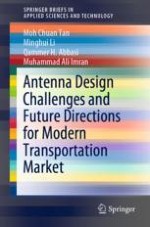This book is focused on wireless infrastructure deployment in modern transportation markets, where the wireless infrastructure co-exists with the existing structure. It details the challenges this deployment may face and explores the mitigation measures to overcome the challenges.
The book proposes a smart antenna structure to overcome airspace congestion, which improves the overall wireless performance and deployment cost. With the combination of practical know-how and theoretical estimation, this book provides insight on how the modern smart antenna techniques that support most cutting-edge wireless technology can be adopted into the existing infrastructure whilst minimising the distraction to the existing system.
This book is suitable for industrial and academic researchers, practising engineers within the field of smart antennae, and wireless infrastructure designers and developers.
